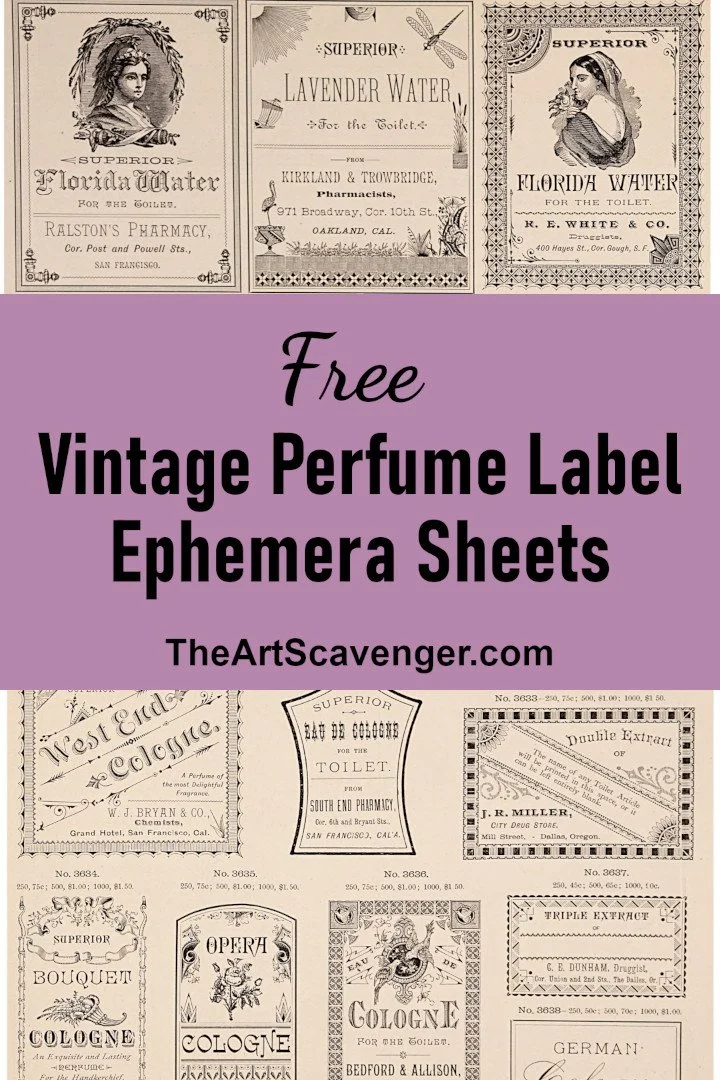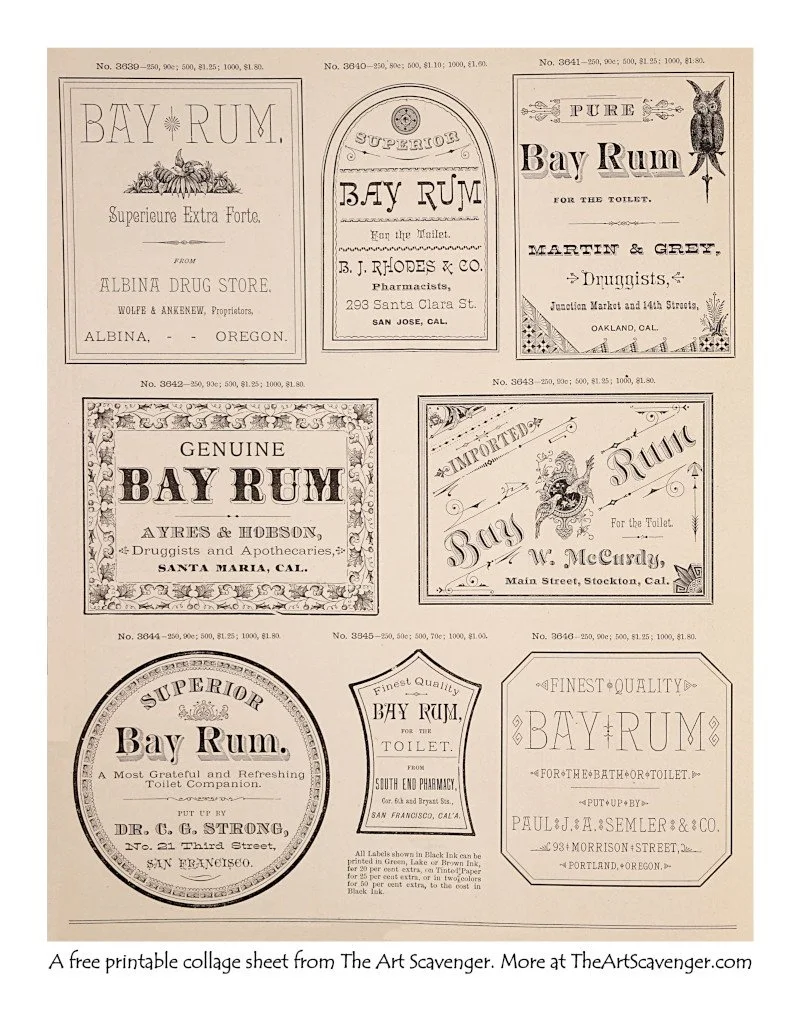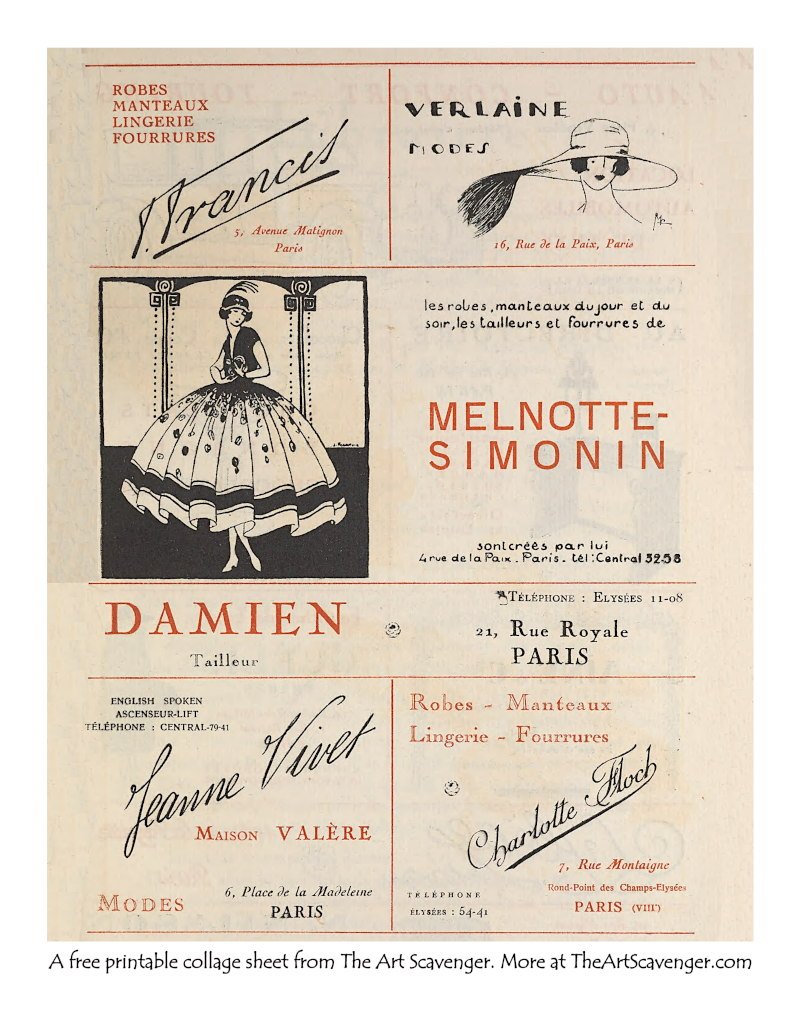Vintage Perfume Label Ephemera Sheets
As an Amazon Associate I earn from qualifying purchases.
These printable vintage perfume and cologne label ephemera sheets are made up of samples from a late 1800s printer’s sample book from which druggists would order the labels for their products.
Scroll down and you’ll find three vintage perfume and cologne label sheets, each with different labels. I almost didn’t include the third sheet because I wasn’t familiar with bay rum. I thought maybe it was some sort of rum used for cooking, maybe a cousin to Bay Seasoning. After a little research, I learned it’s a cologne/aftershave. Now I know.
If you would like more vintage labels, you may want to check out these apothecary labels, these chemist labels, or these poison bottle labels. If you are going with a perfume theme, you might also be interested in these Victorian era perfume ads.
If you enjoy these free printables, be sure to follow on Instagram and Pinterest, so you’ll see when I post new ones.
During the Victorian era (1837-1901), perfumes were primarily used by the upper class and were often made with natural ingredients such as flowers, herbs, and spices. Popular scents included rose, lavender, and jasmine. Perfumes were also commonly used in the form of scented soaps, pomanders, and sachets. Many perfumes were imported from France and were considered a luxury item. The art of perfumery was also becoming more sophisticated during this time, as new methods of distillation and extraction were developed.
In the 19th century, perfumes sold by pharmacies and apothecaries were often labeled as "toilet waters," "colognes," "eau de toilette," or "eau de cologne." These perfumes were typically simpler and less expensive than those sold by exclusive perfumeries, and were not considered luxury items. They were often made with simpler formulas and less expensive ingredients, and were intended for everyday use, rather than as special occasion fragrances.
Perfumes sold by pharmacies and apothecaries were often used for medicinal purposes. They were used for treating a variety of ailments such as headaches, colds, and even as an antiseptic. They were also used for personal hygiene and for freshening up.
I mentioned earlier that I had no idea what bay rum was. I learned that it is a type of cologne or aftershave that is made with the leaves and bark of the bay tree (Pimenta racemosa), which is native to the Caribbean. The leaves and bark of the tree are steeped in alcohol to create a strong and spicy scent. The resulting liquid is then often combined with other ingredients such as cinnamon, cloves, and allspice to create a unique and complex fragrance. It was and still is a popular fragrance for men's grooming products, particularly aftershave. The name "bay rum" likely comes from the fact that the bay tree is native to the Caribbean, where rum is also produced. In addition to its use as a fragrance, bay rum was also used by sailors to treat minor skin irritations and as an insect repellent.
Here is a sheet of bay rum labels:
I hope you’ll add these to your supplies for art journaling, junk journaling, bullet journaling, scrapbooking, collage, artist trading cards (ATCs) and other mixed media artwork and crafts.
You may also enjoy these free collage sheets.
Terms of use:
Free to use for personal or commercial projects. You may print the collage sheets as many times as you wish for your personal crafts or in your projects to sell, including: art journals, scrapbooks, junk journals, collage art, etc. You may not redistribute or sell the collage sheets “as is" in either print or digital form.
If you wish to share the files on your own website, please do not make the files available for download directly from your site. Instead, include an image with a link back to this site.
To the best of my knowledge, these are all royalty free images that are in the Public Domain in the US. However, you should always do your own research if you plan to use them commercially.









